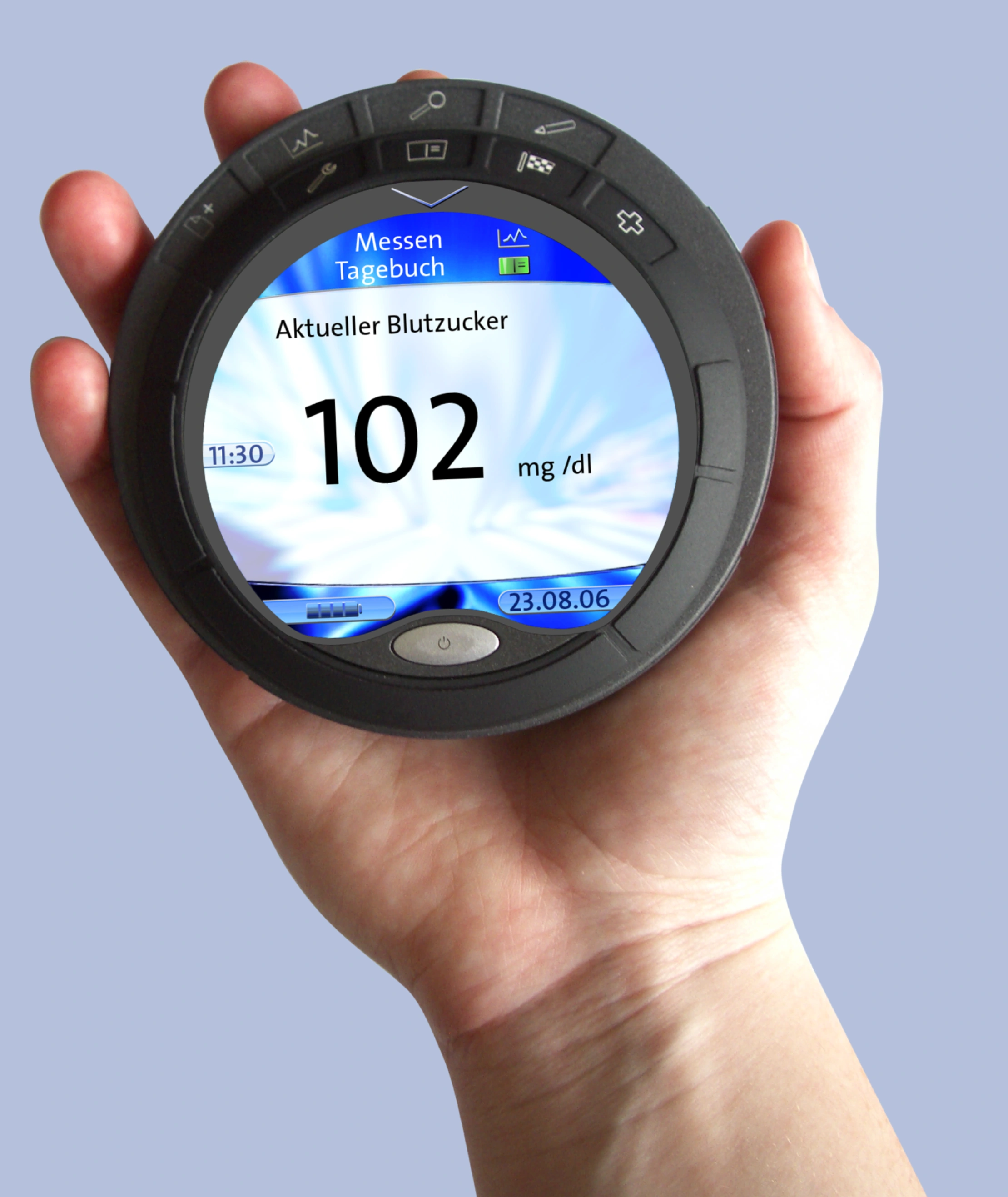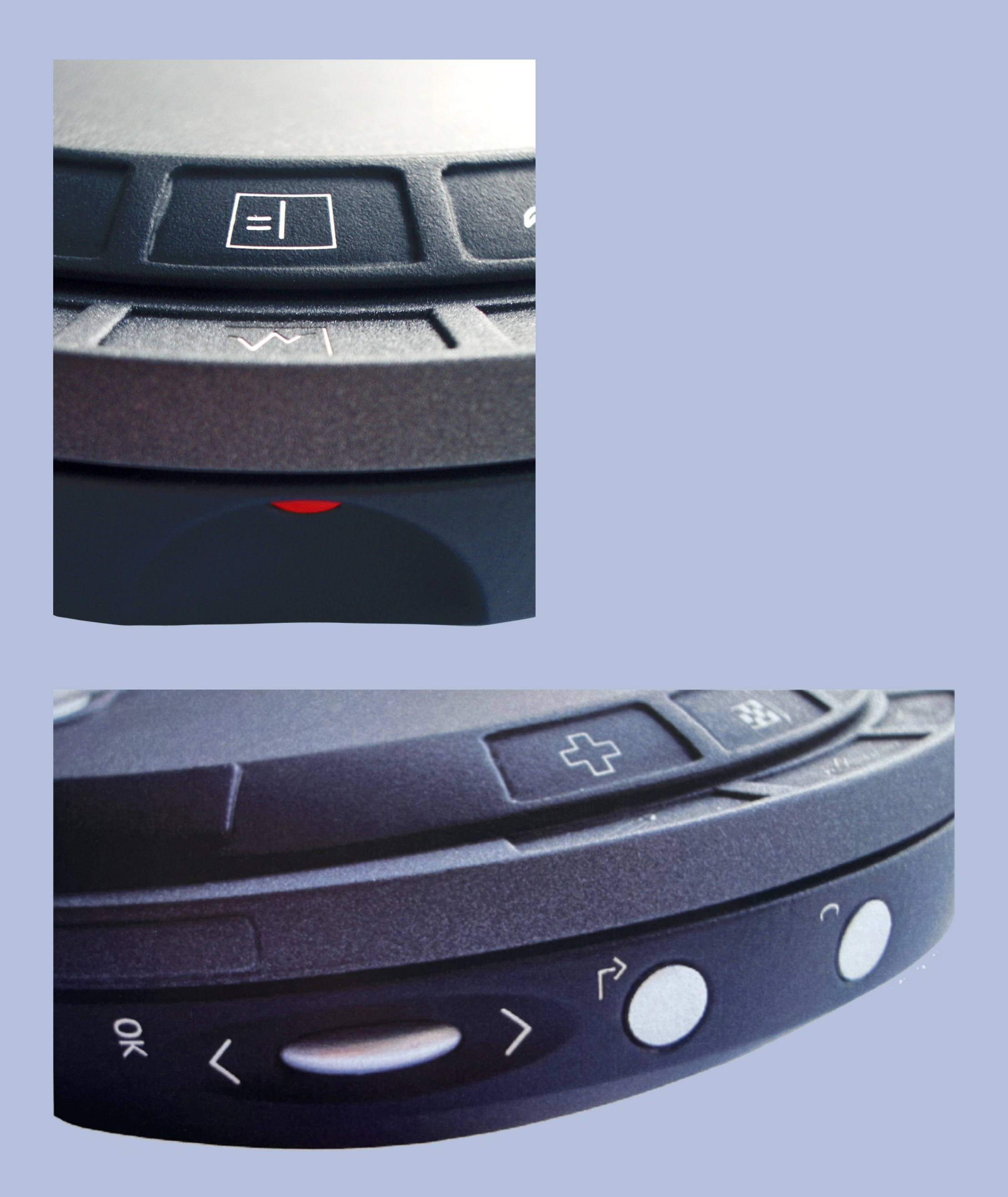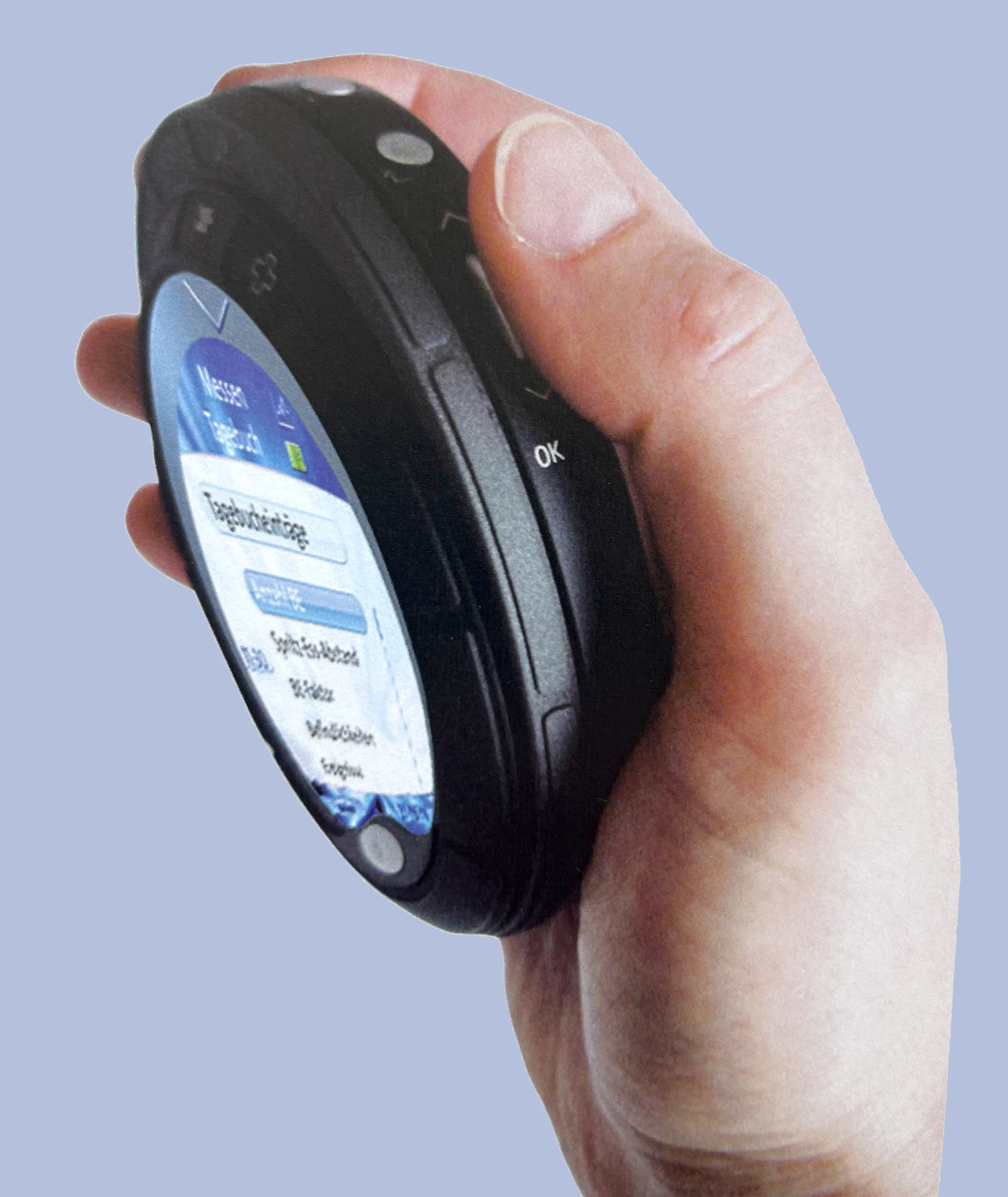Case Study SafIRa
A Device for Non-Invasive Blood Glucose Monitoring
Phase I: UX Research
The primary goal of this phase was to understand the disease Diabetes mellitus, learn about available treatments and the products used for managing the disease, understand the patients and their various pain points with currently available products as well as the context in which the products are used.
Understanding the disease
Through literature research and interviews with patients and medical staff, I learned about the dysfunctions in insulin production, the most common disease subtypes as well as associated symptoms, prognosis, and treatment options. Below is a visualization of the dysfunction of glucose management in the body in Diabetes Type 2 compared to a healthy system.

Understanding the context of use
Through market research and interviews with patients and medical staff, it became obvious how many parts and devices are involved in the management of this chronic disease involves, and products are associated with one of three main areas: Blood glucose measurement, insuline supply, and disease monitoring.
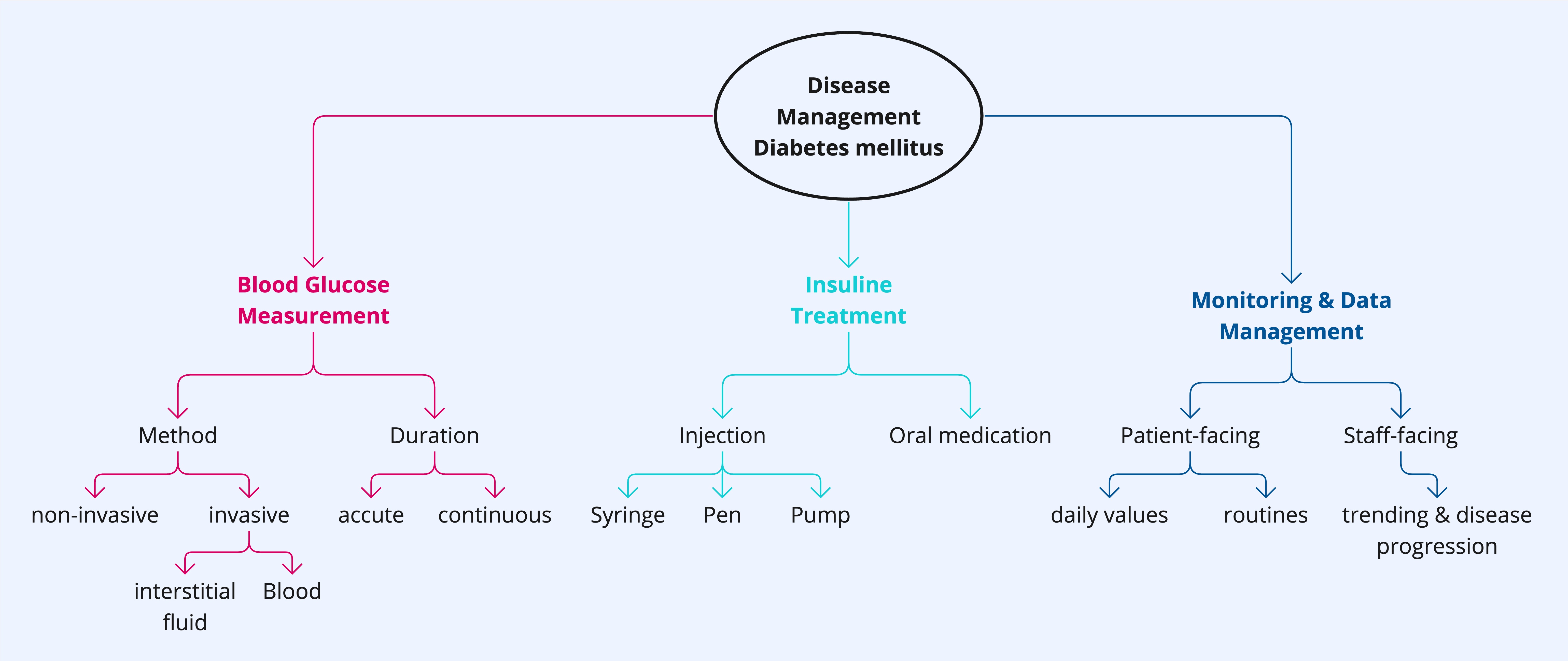
Understanding the user and current product situation
Interviews with patients, diary studies, as well as product and usability reviews were used to analyse typical use scenarios and patient workflows in daily routine to derive common pain points and user needs. Some common issues are pointed out on an example device (see below).
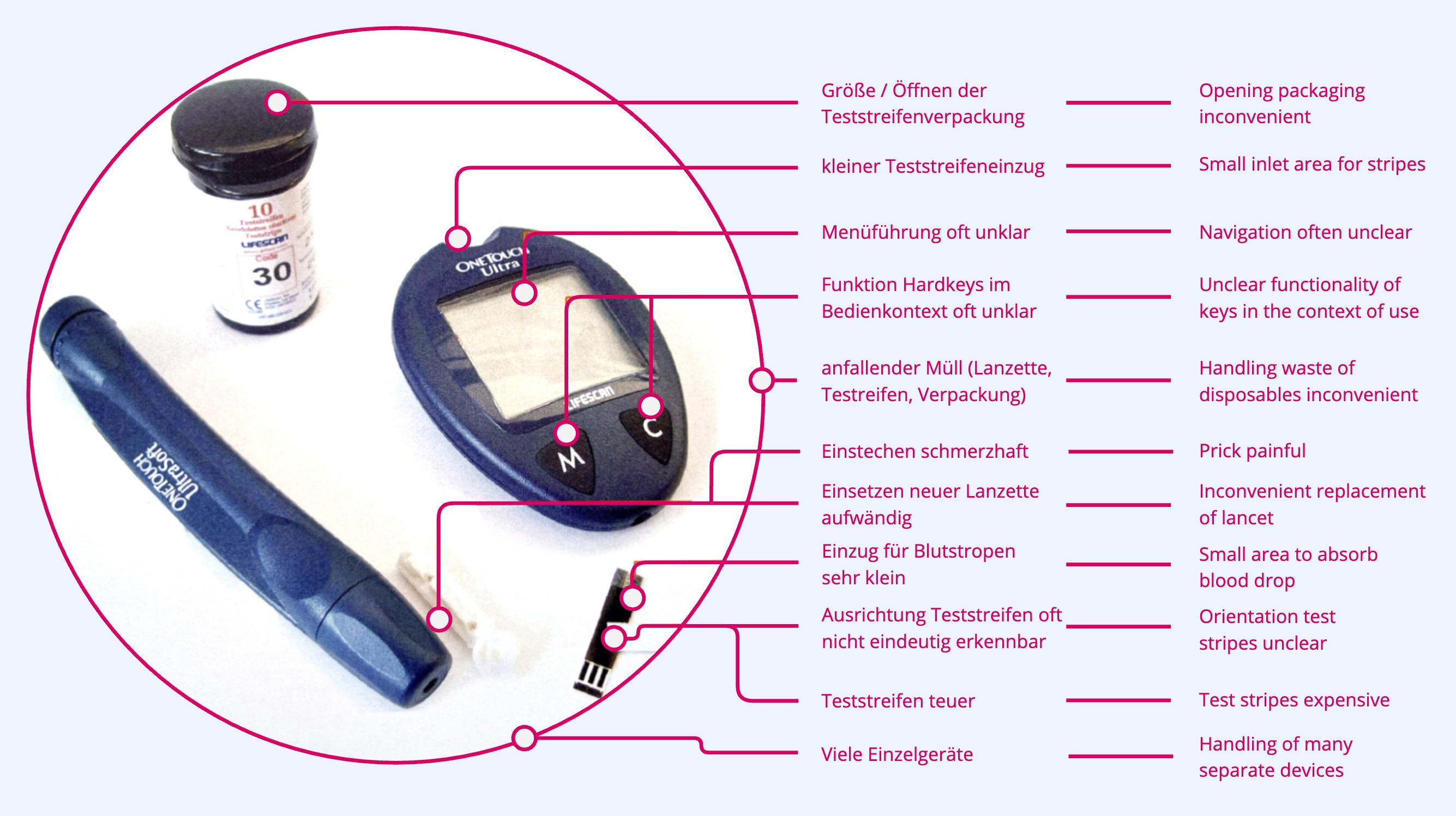
Phase II: Ideation
Based on the insights gained during the research phase, ideation centered around 3 core requirements: a) To improve overall device interaction through e.g., better handling of disposables or reduced number of separate pieces to interact with; b) To offer an appealing design which makes the device "cool" to use even at public places; c) To integrate seamlessly measurments, monitoring, diary functions, and data management. Concepts were ideated for commonly used invasive as well as potential non-invasive measurement technologies.
Concepts for invasvive measurements
Concepts based on the currently common invasive measurement technology included ideas to improve the inlet area for stripes e.g., through enlargement (left) or illumination (middle), to offer on-board storage for disposablees (right), or to reduce the number of separate devices for routine blood glucose measurements (bottom).
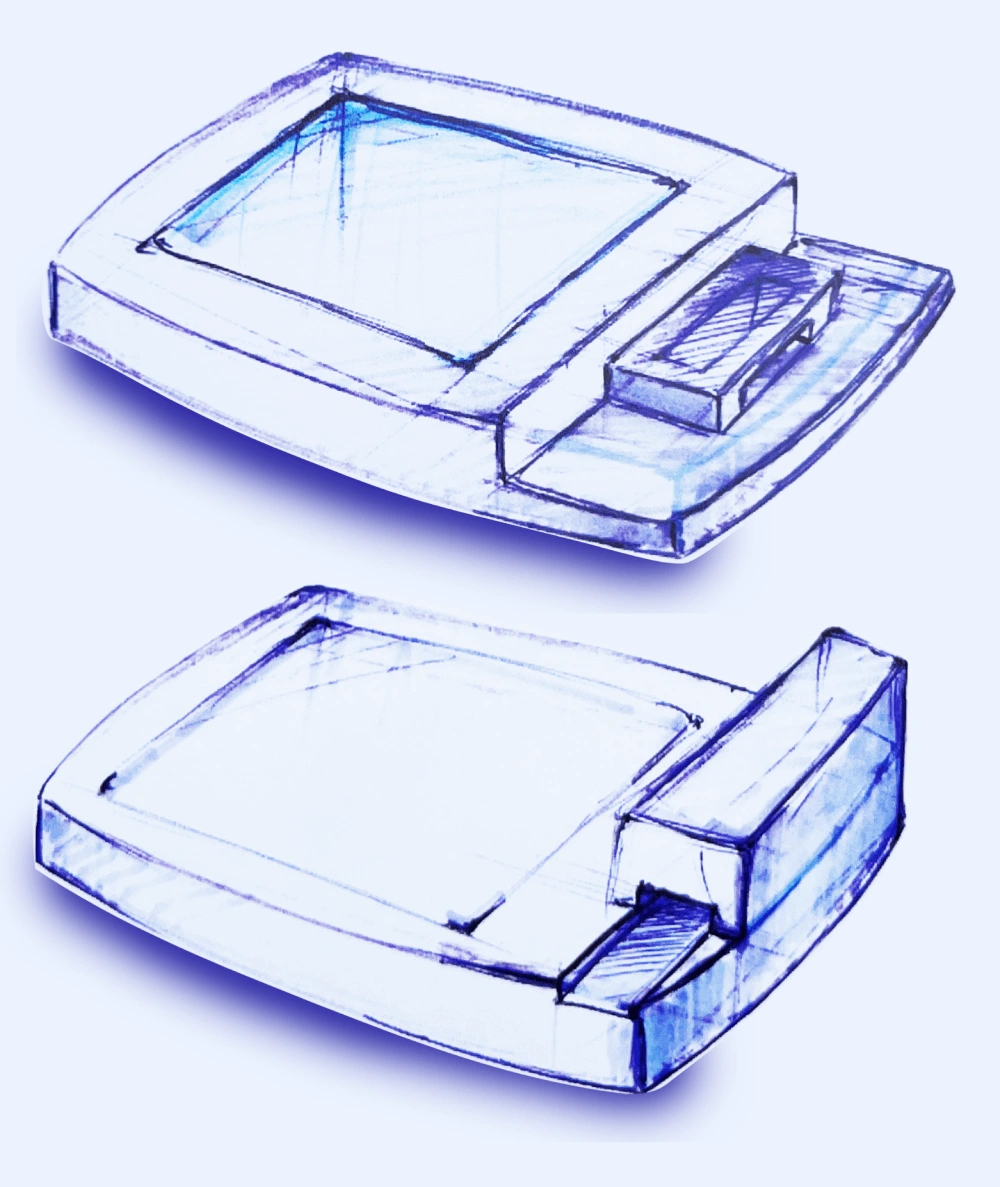
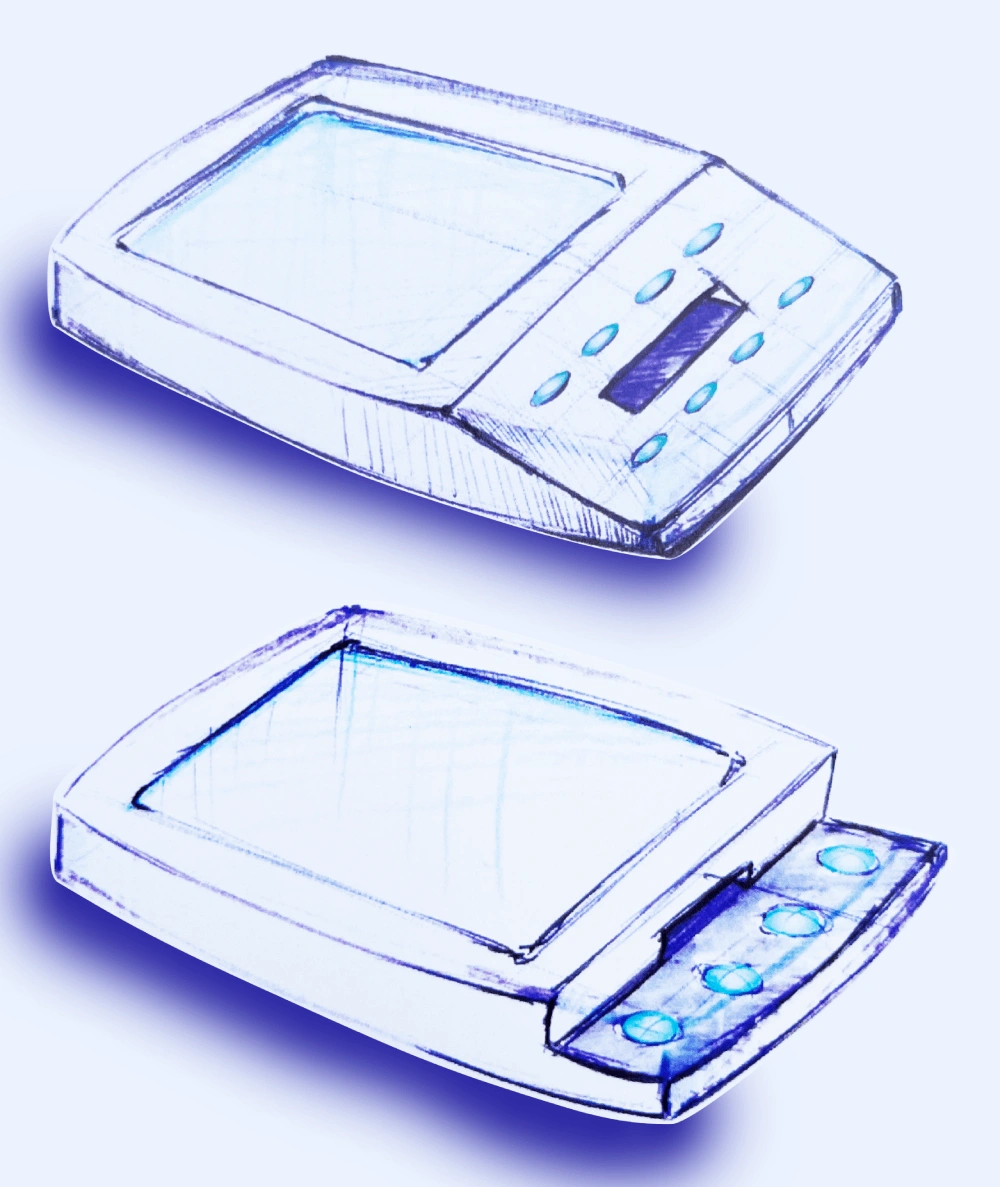
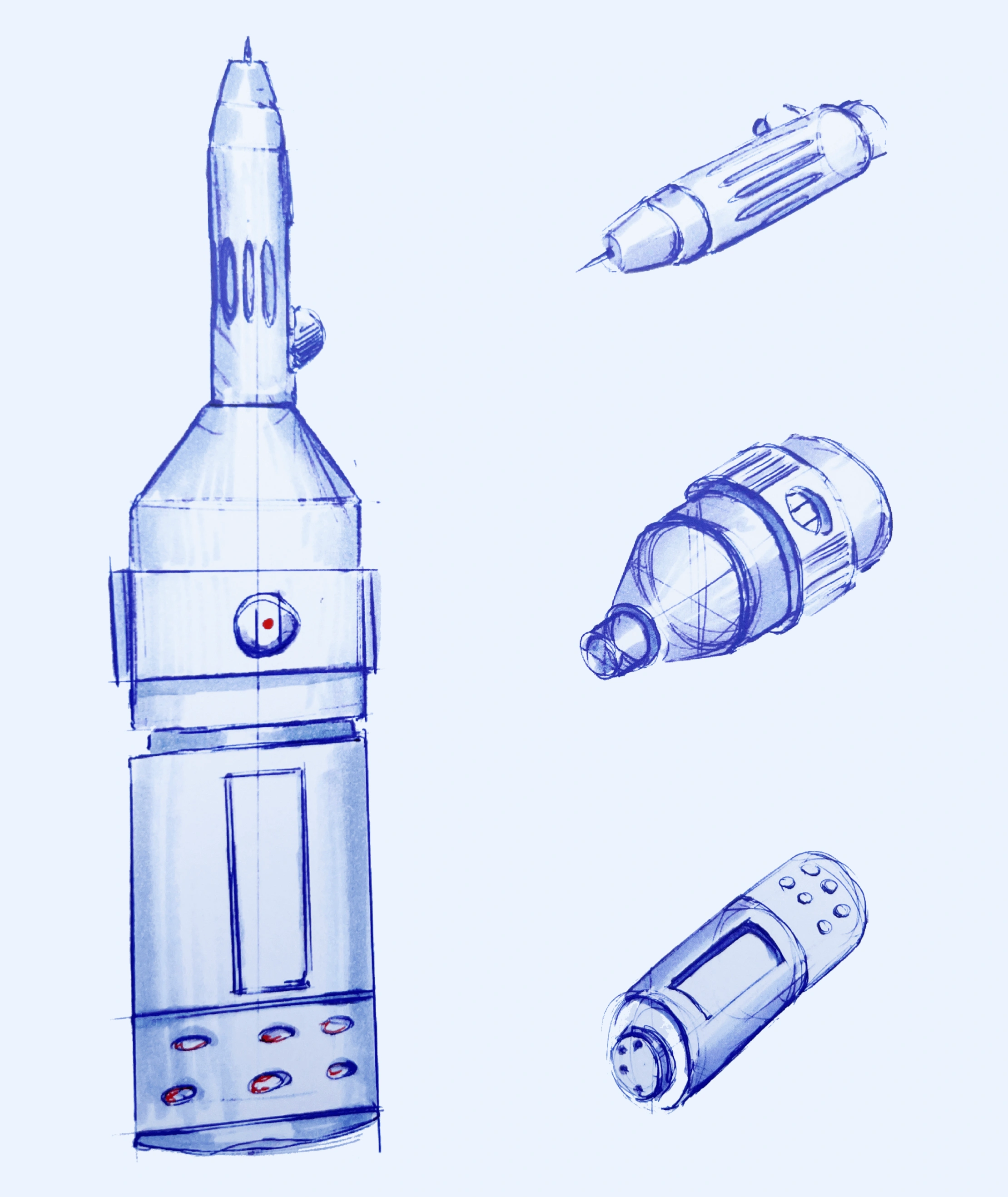
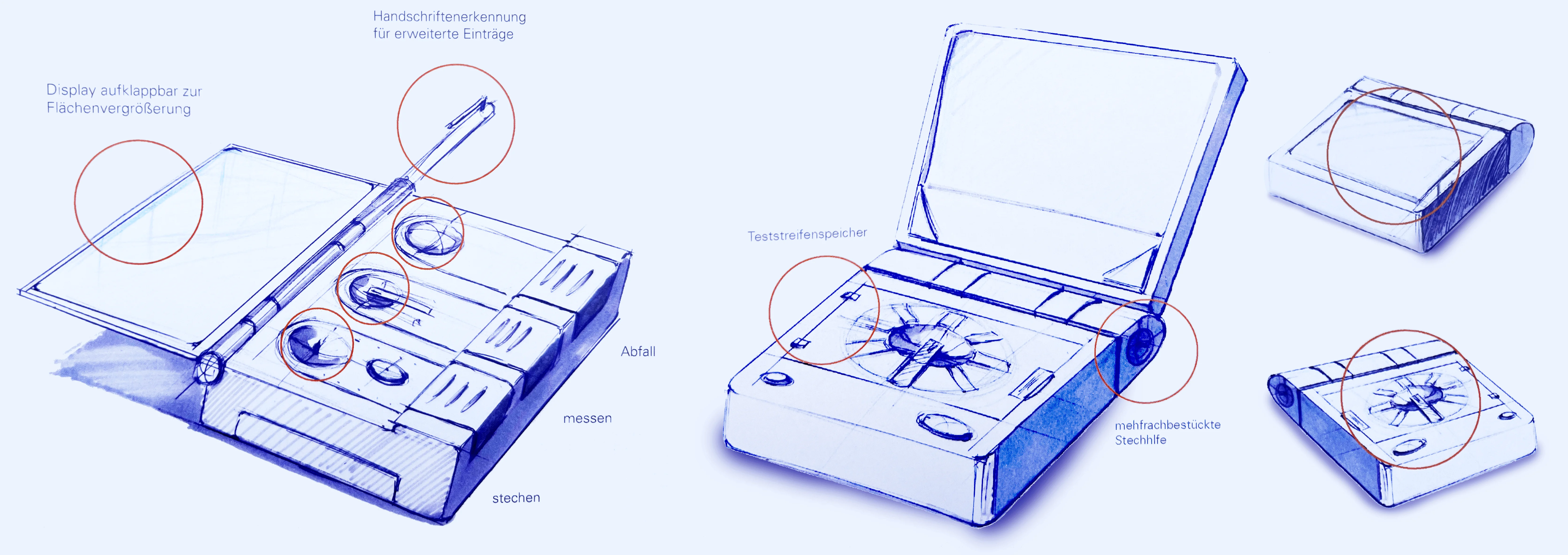
Concepts for non-invasvive measurements
Concepts for non-invasive measurements utilize infrared blood glucose measurement technology. No disposables are required here, thus, there's only the measurement device itself to handle. These concepts therefore emphasize ease of use through form-fit designs.
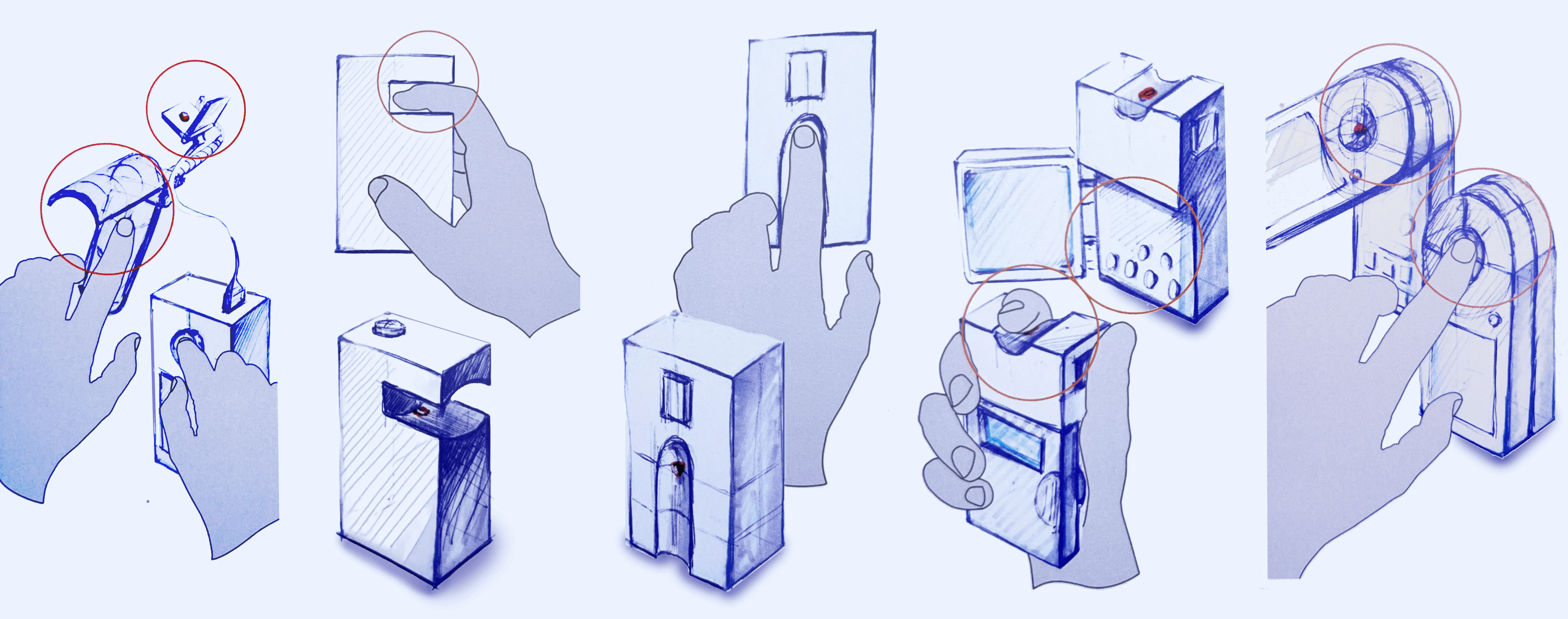
Phase III: Idea Selection & Concept Elaboration
After diverging first concept ideas, this phase converging towards one idea to select and elaborate further. Here, I decided to utlize the non-invasive infrared-based technology to enable blood glucose measurements. This would reduce the number of devices to interact with tremendously, would relieve the need for disposables, and would offer pain-free measurements. Further elaboration was required for the design of easy-to-use workflows which seamlessly integrate measurments, monitoring, diary functions, and data management in a hand-held device while meeting the requirements to migrate the new measurement technology on-board the device.
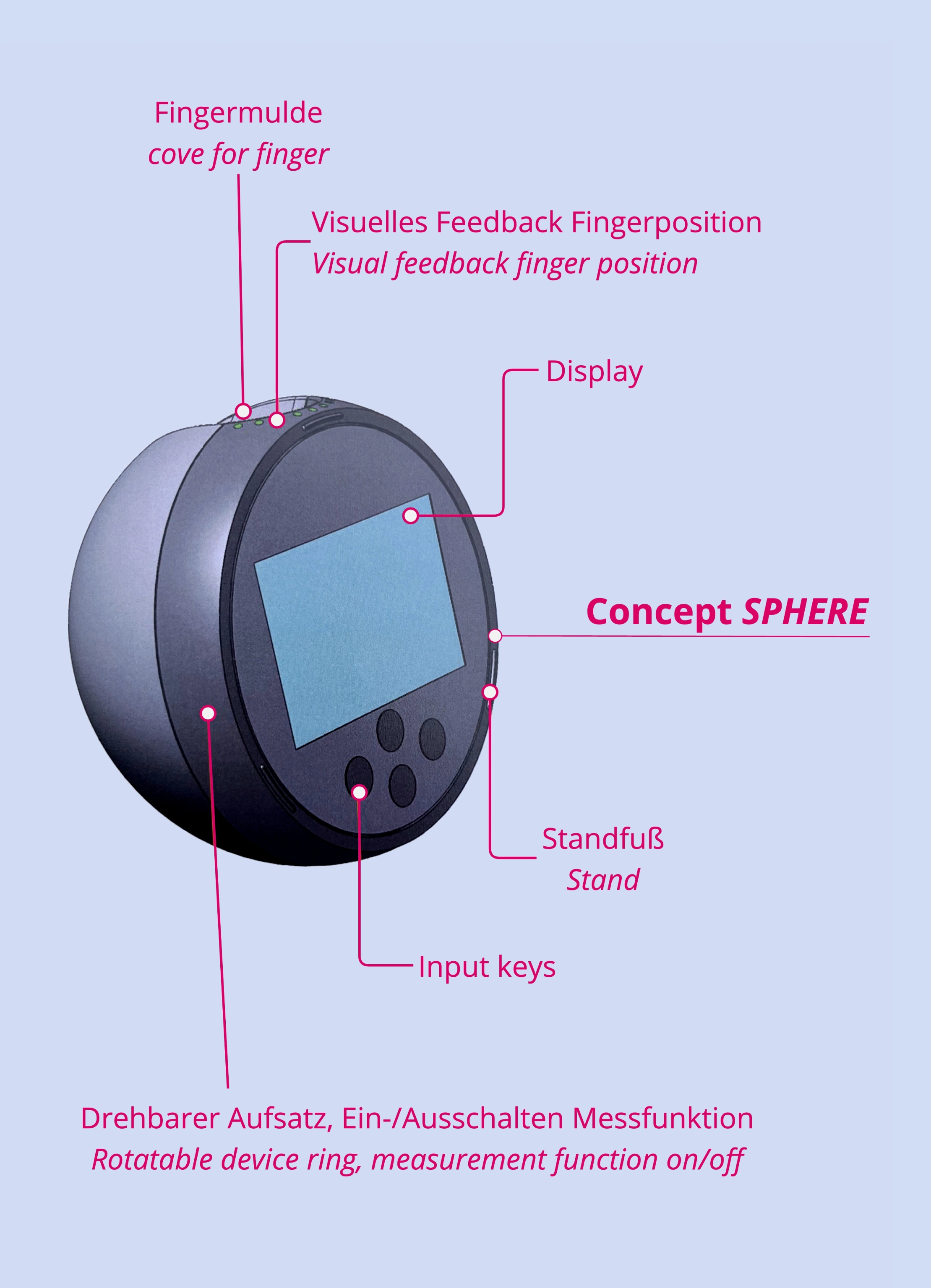

The hardware as input device
Hardware concepts centered around two main aspects: a) To enable measurements while holding the device comfortably in one hand; this includes a form-fit guidance on where to locate the finger. b) To use the actual hardware as input device to e.g., turn on the device or provide direct access to software submenus. Both requirements promote an overall rounded device design with rotatable hardware elements.
Usability studies & ergonomic assessments
To get certainty about the size of the device in it's spherical shape, and to investigate optimal placement for keys, volume models were crafted and tested with for ergonomic assessments.
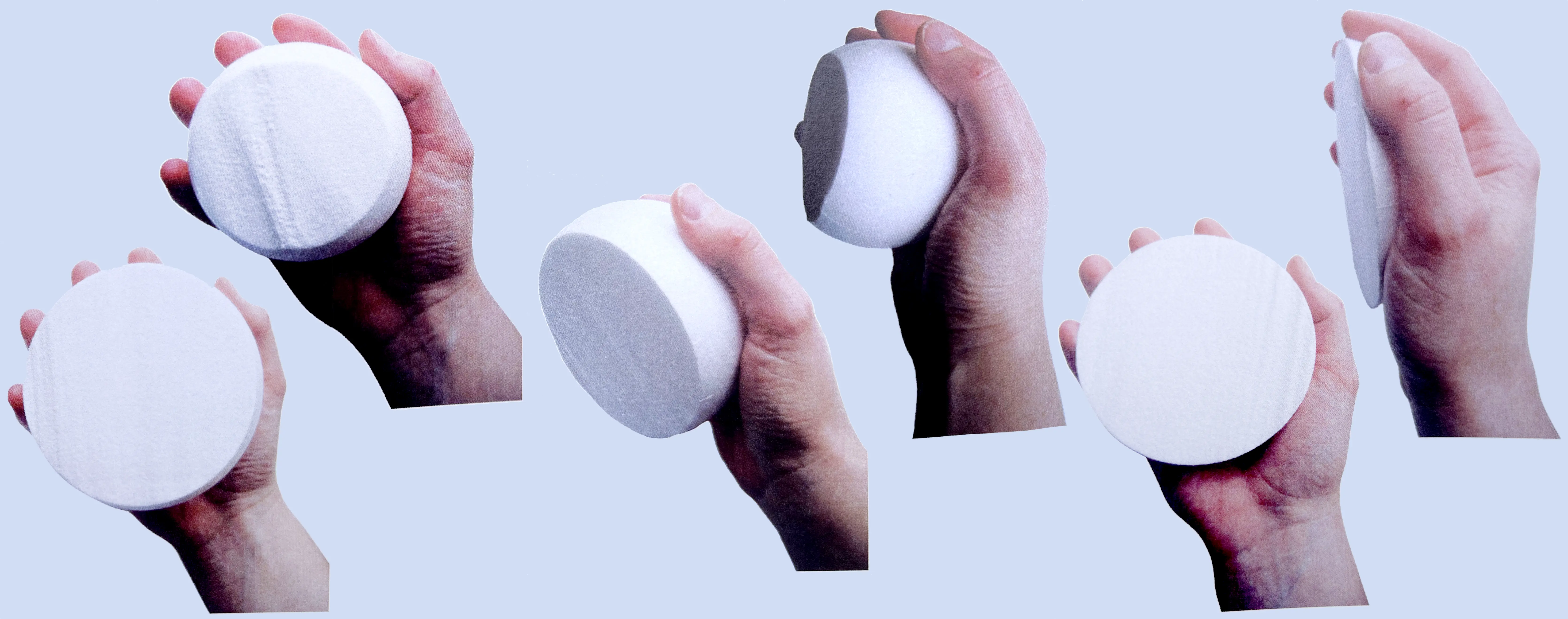
Improving the sphere
The Sphere as outer shape reveiled some shortcomings including the overall size of the device. The design was therefore further improved: The new disc shape is smaller and easier to hold, plus more stable when placed on a surface such as a table. Further, hard keys can be reached more conveniently, and the position of the rotatable hardware ring is now legible from the front and the side views.
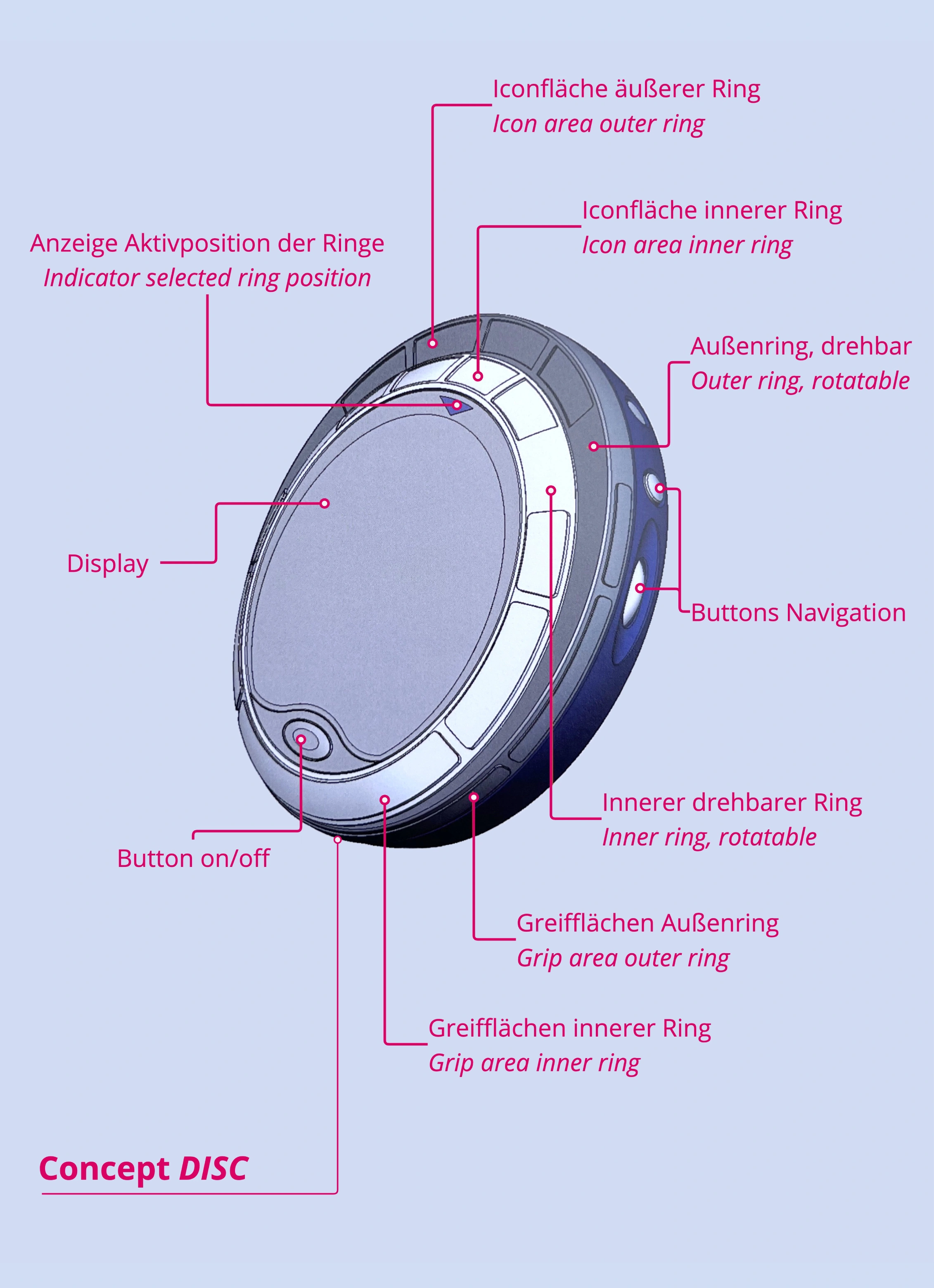
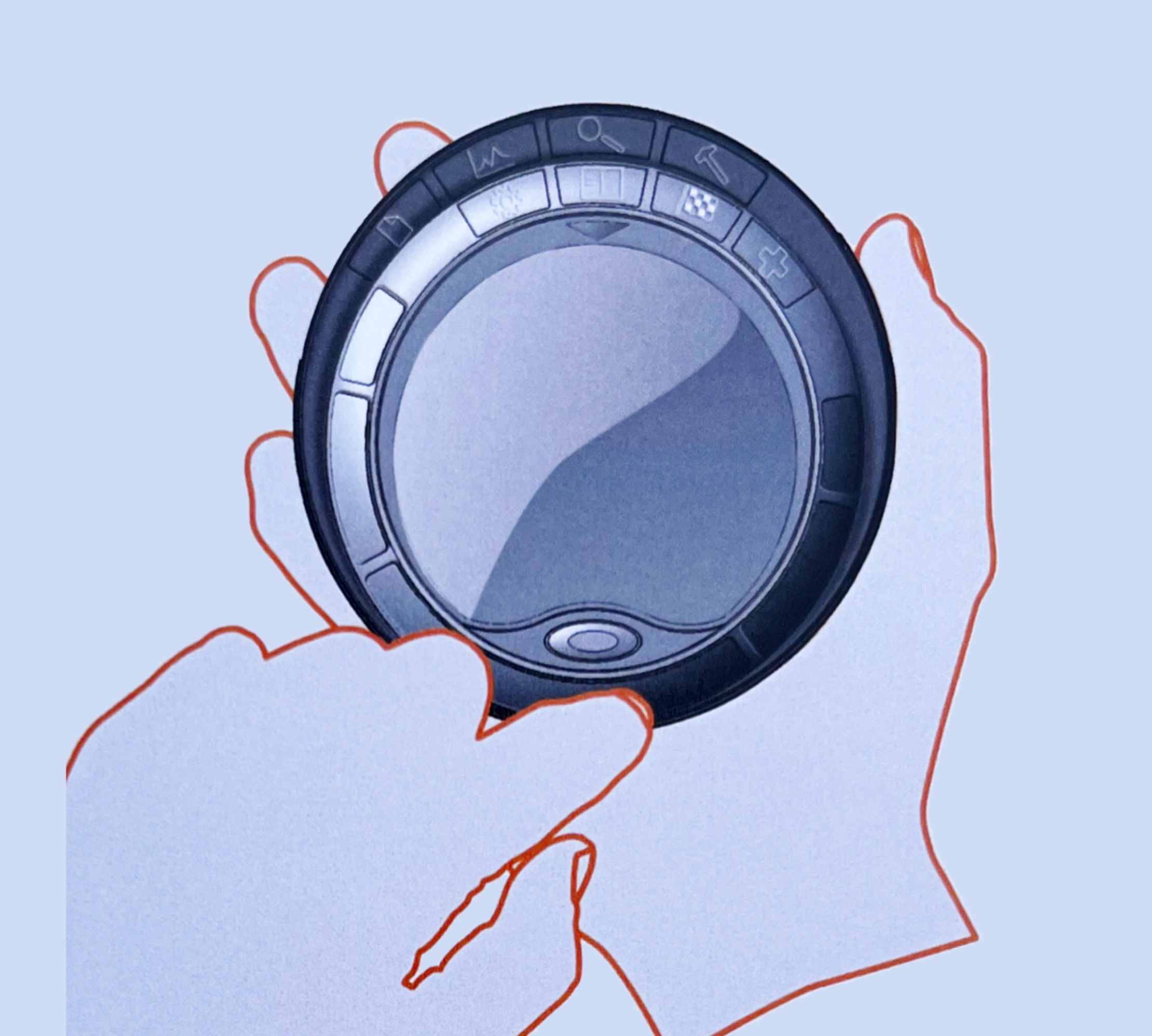
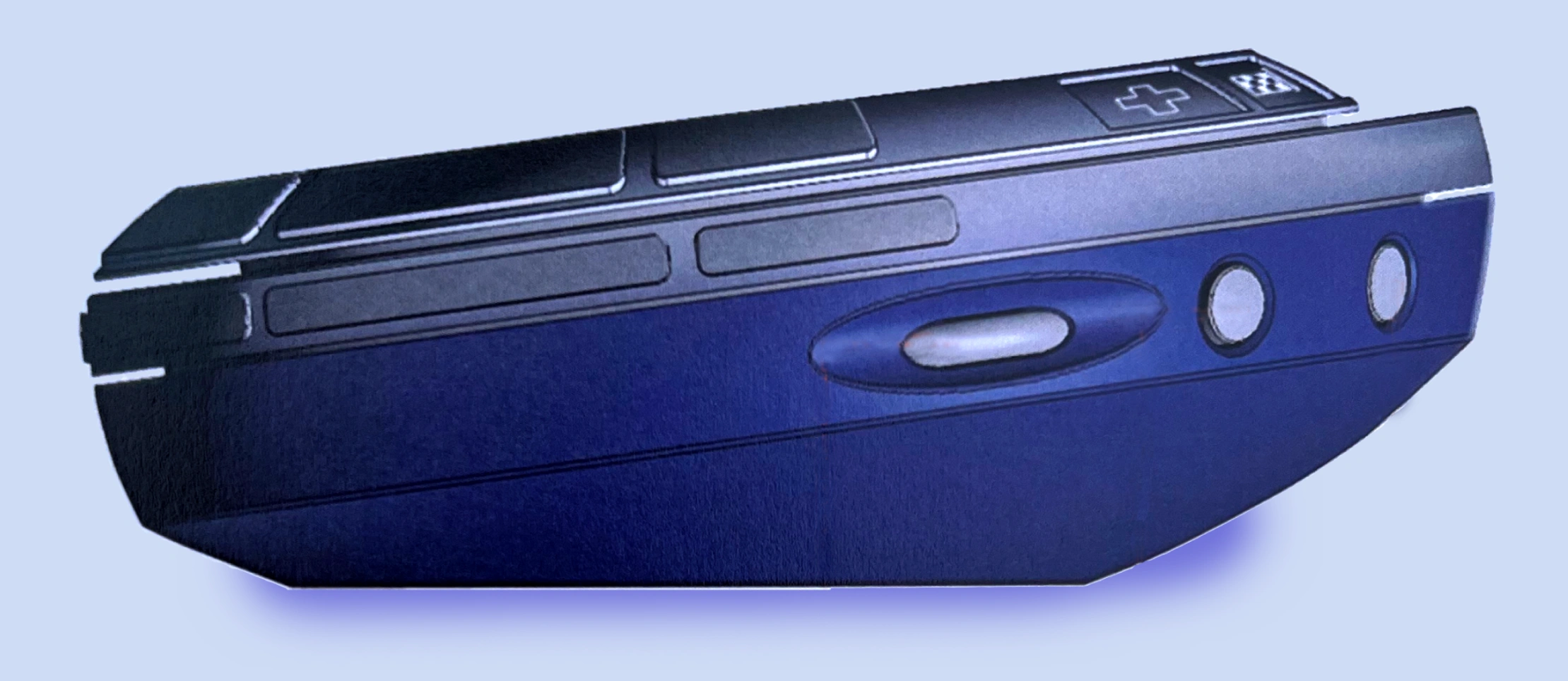
Phase IV: Final Design
This phase was about finalizing the device and interface design to enable a seamless interaction and handling across modalities of hardware and software. The final device integrates the core functionalities of measurement, monitoring, diary, and data management and the rotatable device elements allow for a direct access to each of those core functions. With the posisition of the inner and outer ring, guided by specifically designed device icons, the currently selected core function remains visible at all times while navigating through the submenus using only three further hardware keys. Finger placement for measurements comes naturally and intuitive while effortlessly holding the device in one hand. Given its hand-held size and the "cool" look & feel, the device can be a constant compagnion and relieves the stigma of the disease when using it in public. It thus supports the freedom of an autonomous life while dilligently managing a chronic disease.
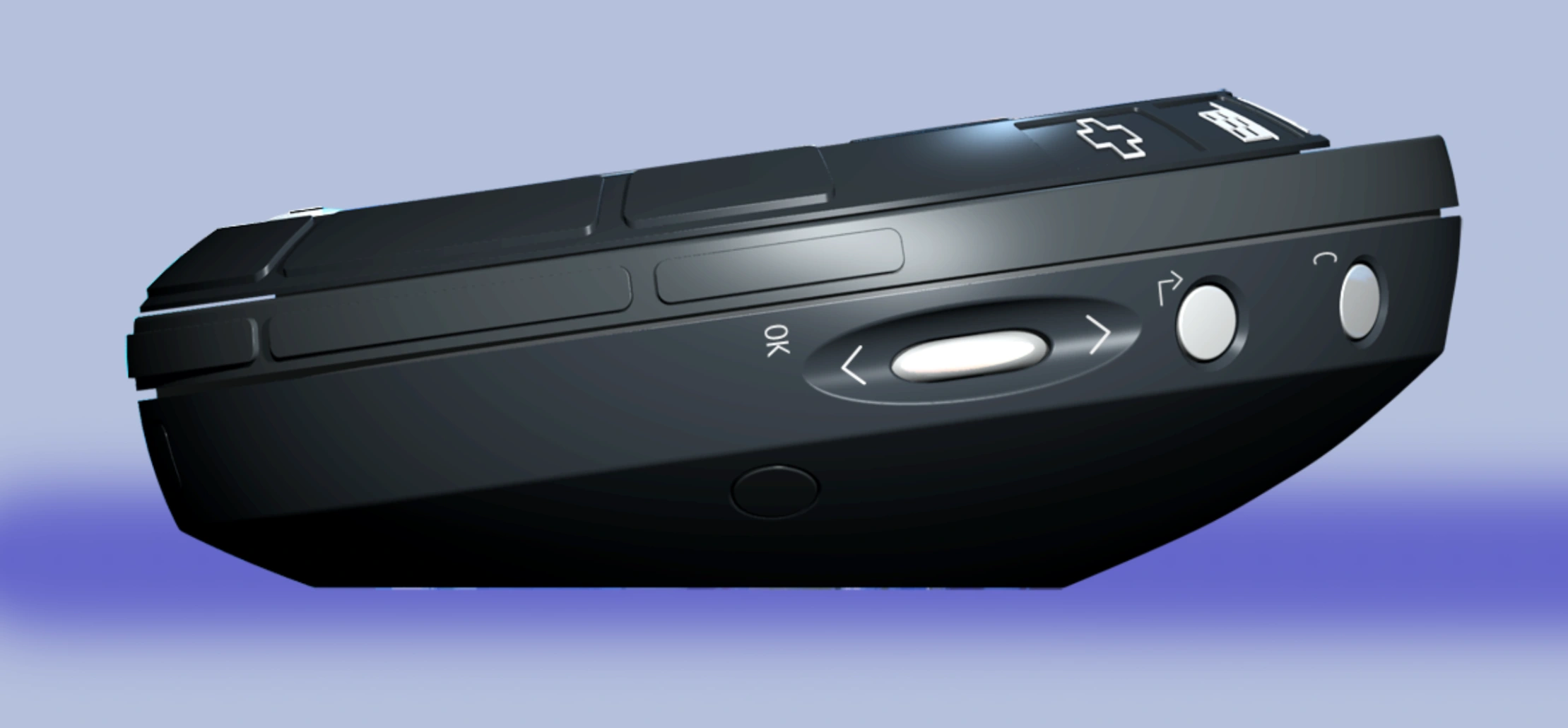
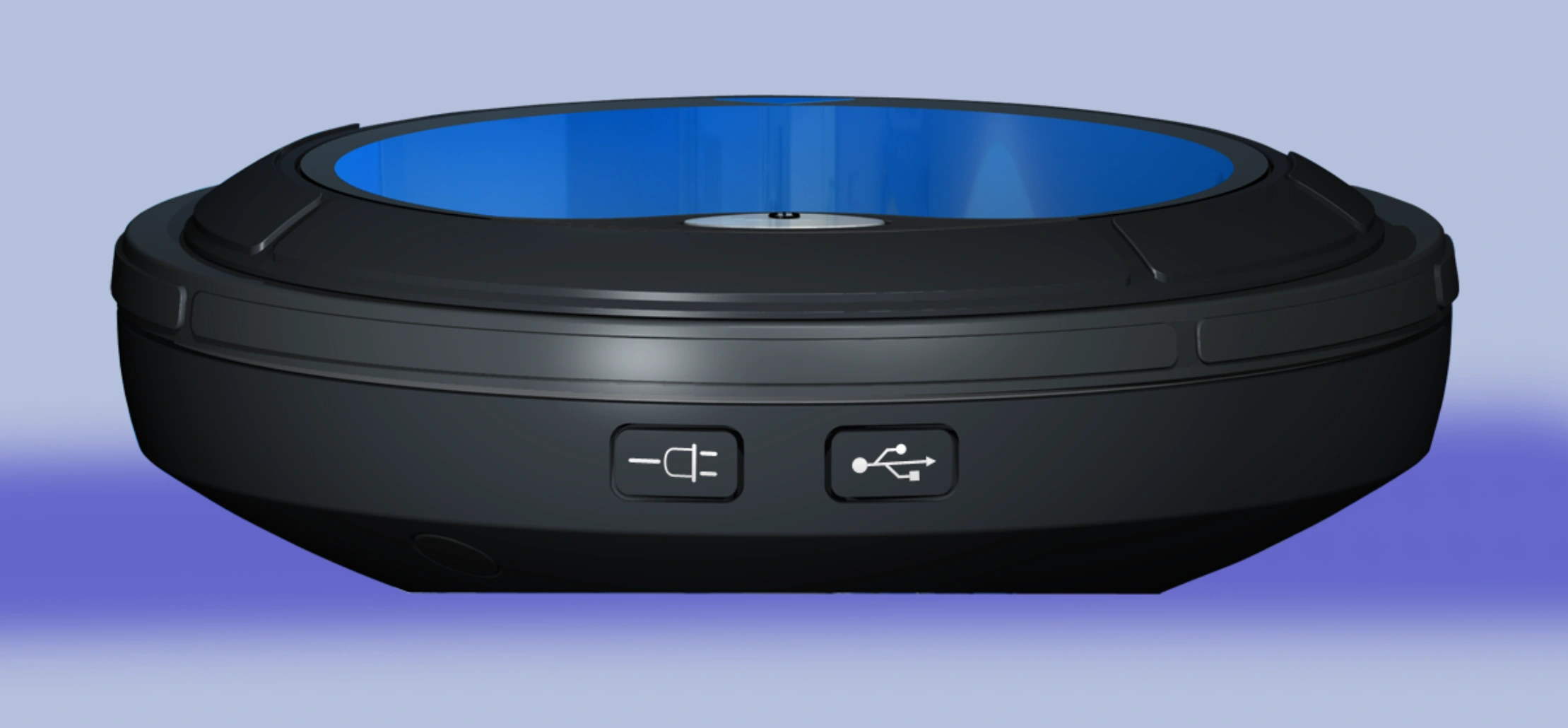
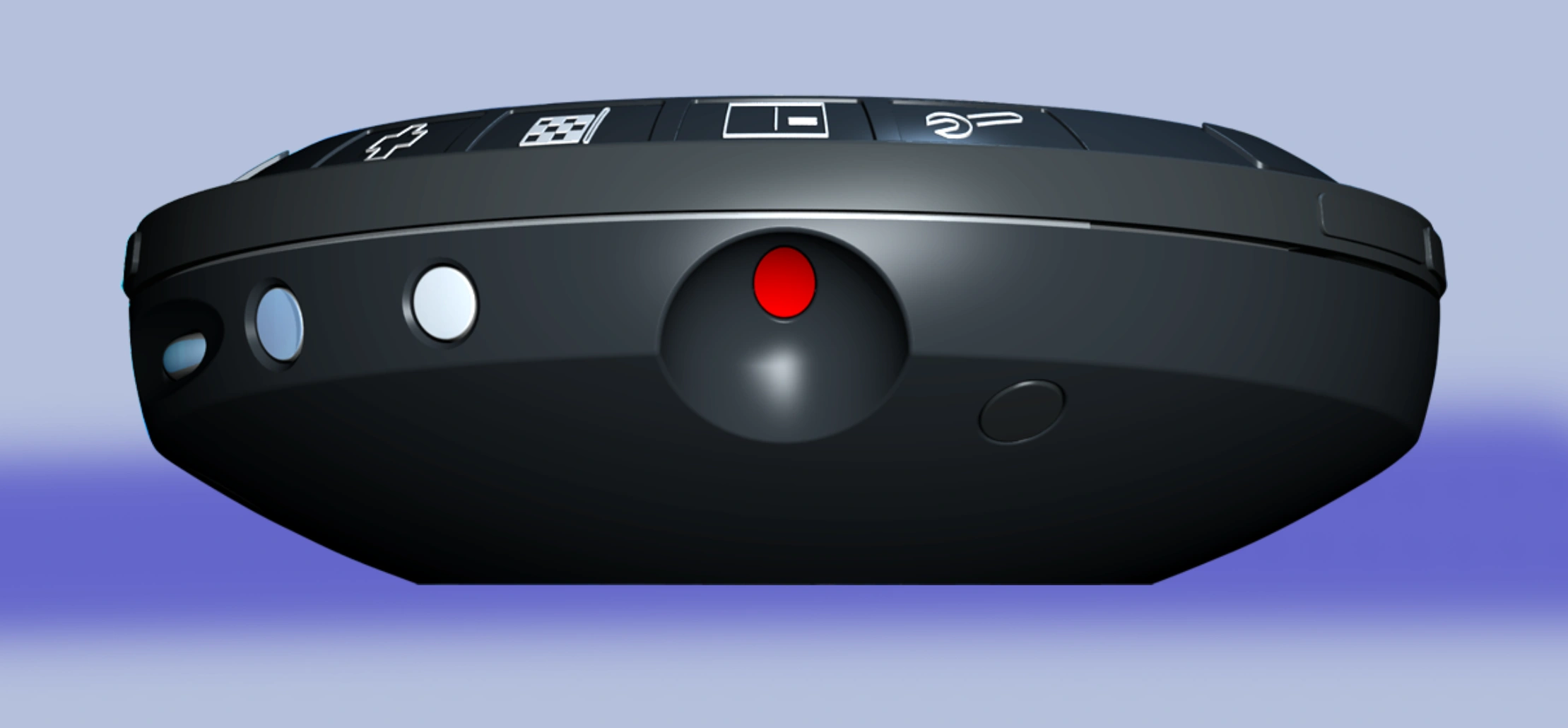
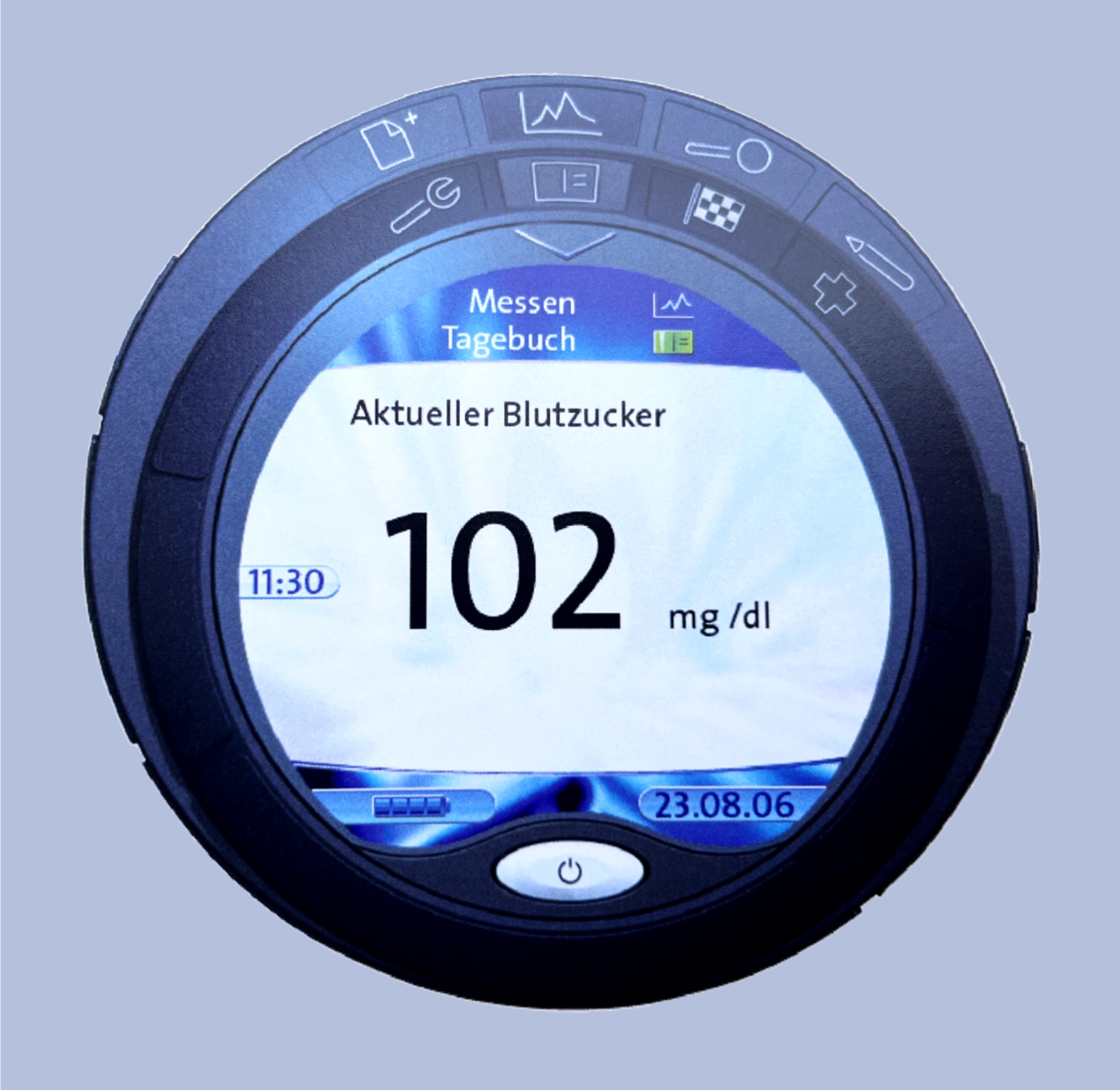
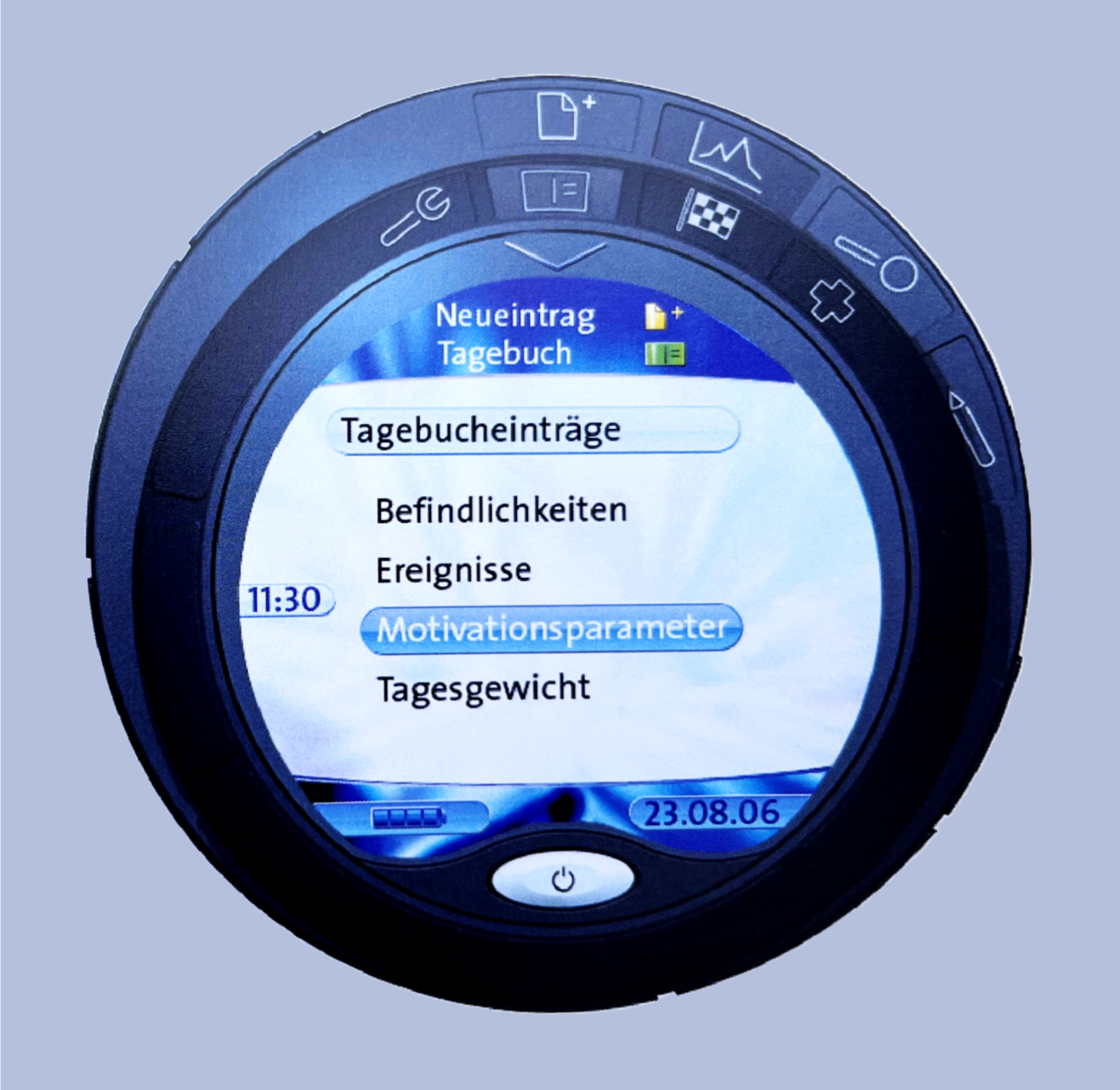
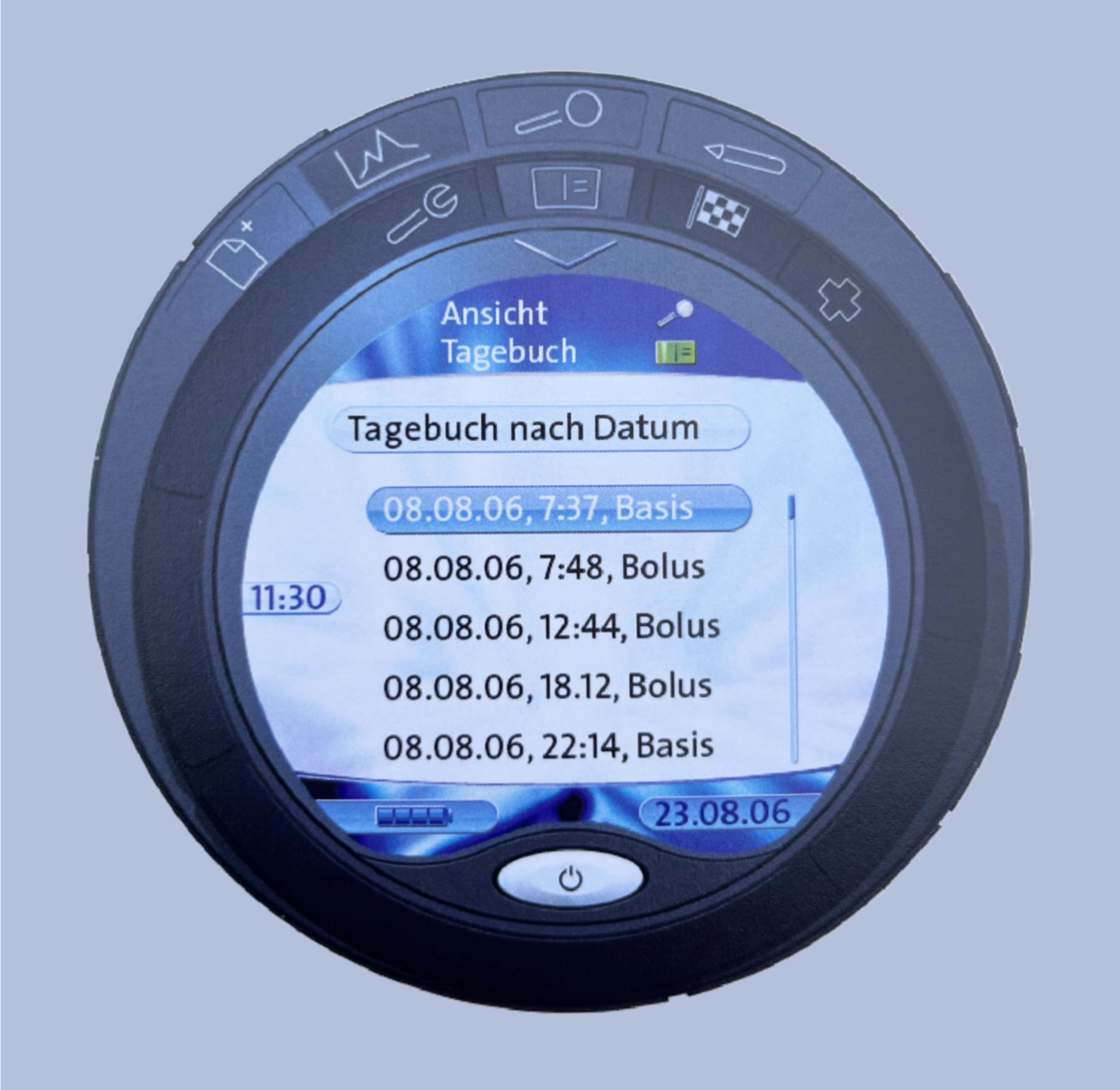
The hand-held non-invasie blood glucose measurement device SafIRa. Top row: Renderings of the device. Bottom row, different main menus selected by rotating the device rings and indicated by the position of the device icons; from left to right: Measurement, New entry diary, View diary.
Below, pictures of the device model. Left: Front view with finger placed for measurement; middle: Details hardware icons; right: Side view with thumb on the scroll key to navigate in the submenus.
